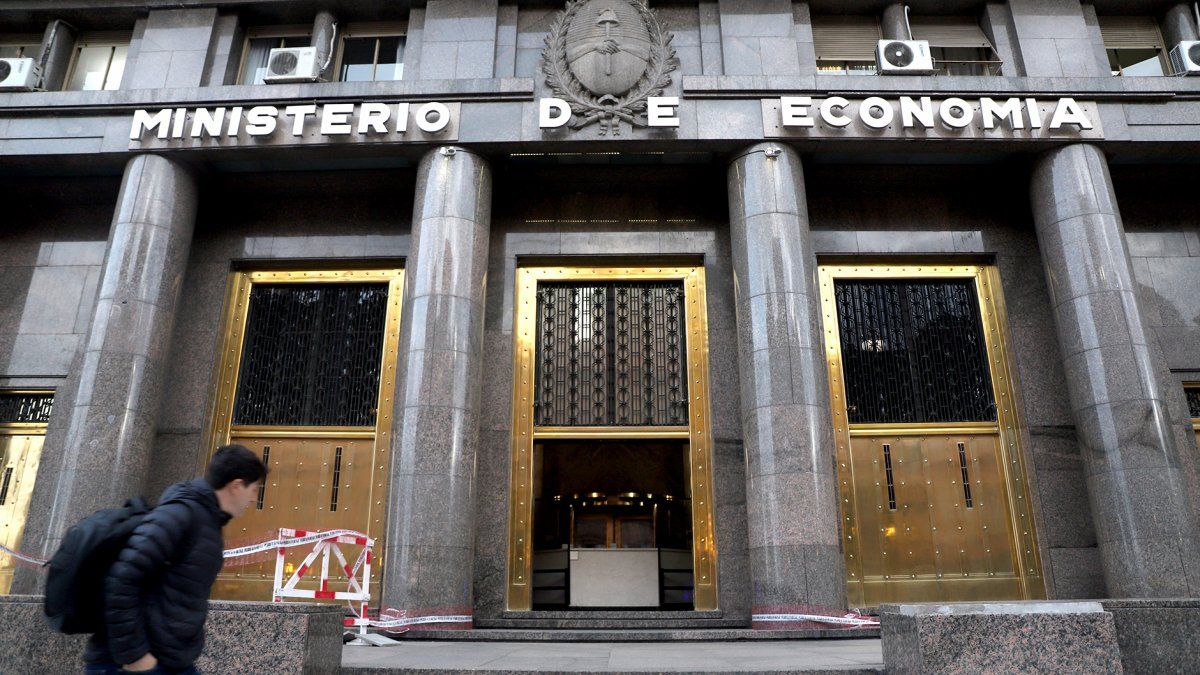The index is composed of four parameters, based on the quantitative commitments assumed by the Argentine government with the IMF: primary deficit, income in real terms, monetary issue and net reserves.
primary deficit
The goal for the fourth quarter established a primary deficit of $2.02 trillion (equivalent to 2.4% of projected GDP), while this accumulated $1.96 trillion at the end of 2022 (2.3% of GDP) based on official data. Thus, the goal was achieved with a $0.6 trillion margin (being 3% below the proposed maximum).
During the last quarter of the year, income (net of income from primary placements) grew at a rate of 85% per year (-5% real), while the spending did so at 64% per year (-17% actual).
Spending on retirement and pensions (both contributory and non-contributory, equivalent to 39% of primary spending) grew at 74% per year (-10% real) during the fourth quarter of the year, while the social allowances they did it to 70% per year (-13% real) and the energy subsidies at 9% per year (-44% real). On the other hand, spending on wages (11% of primary spending) grew at 92% per year (-1% real).
In the accumulated of the year, resources grew at an average rate of 71% annual (-1.6% real)Meanwhile he spending at 68% per year (-3% real).
Nevertheless, it should be noted that the debt national government float (difference between accrued and paid expenditure), amounts to 1.1% of GDP at the end of 2022. Although it is aligned with what is established by the IMF, this allows the fiscal result for December to be smoothed, although it still constitutes liabilities that must be settled.
On the other hand, in the annual total, the aforementioned expenses grew by 70% per year (-2% real), 78% per year (+3% real) and 58% per year (-9% real), respectively. In regards to expenditure on salaries, this grew at 84% per year during 2022, consistent with a real growth of 6%.
Income in real terms
The goal agreed is of $10.35 billion, but the value reached it was of $10.44 billion, above what is established. That is, the goal was reached with a $0.92 trillion margin (almost 1% above the proposed minimum).
During the fourth quarter of 2022 the collection national grew 93% accumulated year by year (equivalent to a real increase of around 0.4%). stood out a internal component growth (DGI), with a growth of 109% per year (+9% real), followed by the tributes bound for the social Security which they did at a rate of 94% per year (+1% actual). On the other hand, during the quarter, the collection associated with the customs component (DGA) grew 57% annually (-18% actual).
The rise was marked by earnings with an annual growth of 124% (+17 real), as a result of income tax advances to large companies, followed by VAT with a growth of 98% per year (+3% actual).
Conversely, among those less grew are those related to foreign trade (trade rights), which Despite the validity of the dollar Soy II in December, they grew at an average rate of 55% per year (-19% real) during the fourth quarter of 2022.
In it accumulated of the year, the total collection grew 82% annually (+5% actual). DGI did it at 88% per year (+9% real), DGA at 70% per year (-1% real) and social security at 80% per year (+5% real).
monetary issue
The agreed goal is $654,000 million, while the effective issuance was $620,051 million. He reached the goal with a margin of $33,949 million (5% below the proposed maximum).
During the fourth quarter of 2022 the issue for temporary advances and transfer of profits was $0, which allowed the government to over-fulfill this goal. Thus, the year ended with a total issued of $620,000 million (0.7% of GDP).
From the RA Center, however, they point out that this goal only contemplates the aforementioned operations (ATs and TUs) and adds that there are other operations for which the Central Bank can issue money with the intention of financing (directly or indirectly) to the Treasury. Therefore, to be considered interventions in the secondary debt market (to support the yield curve and thus facilitate the placement of Treasury securities), the total issued during 2022 would have amounted to $2.3 trillion (2.7% of GDP). Naturally, the counterpart of this injection of currency is the increase in BCRA debt (Pases and Leliq) to the extent that the public rejects those issued pesos.
Net Reserves
The goal for him fourth trimester implied a accumulation of US$5,000 million. to december, The accumulated cash reserves with respect to December 2021 amounted to u$s5,938 million, resulting in a over-fulfillment of the goal in US$938 million (19% above the agreed minimum).
The CentroRA makes another clarification regarding this item and indicates that according to the terms and conditions of the agreement with the IMF, All asset valuations are made at the exchange rates in force at the time of signing this agreement (March 2022). However, both the SDR, the yuan and gold have depreciated against the dollar since then, so the current valuation of the reserves is less than that contemplated by the fund. In this sense, By valuing the reserves at market prices, as of December 31, the government would have managed to accumulate US$5.340 million, US$340 million (7%) above the target.
This fulfillment of the reserves target is due to three factors key. First, the component ‘budget support’ granted by the IMF to Argentina for almost u$s4,400 million. On the other hand, the IDB disbursements and finally the implementation of two differential exchange rate regimes (Soybean dollar). Regarding the latter, it is worth noting that, throughout the second half of 2022, the only months where the BCRA was not a net seller of foreign currency (but a buyer) was in September and December, coinciding with said differential exchange rate for the oilseed sector. .
Source: Ambito
David William is a talented author who has made a name for himself in the world of writing. He is a professional author who writes on a wide range of topics, from general interest to opinion news. David is currently working as a writer at 24 hours worlds where he brings his unique perspective and in-depth research to his articles, making them both informative and engaging.




